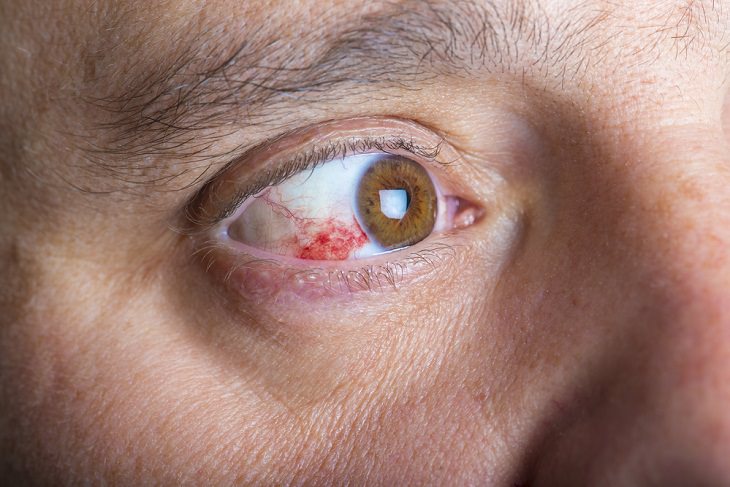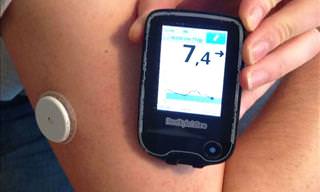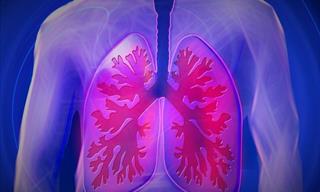The coronavirus outbreak has completely transformed our lives in just a few months. This new virus has been unpredictable and has perplexed the best of health experts. Even now there is so much we don’t know about the virus or how it will behave in the coming months.
As the world continues to struggle with the COVID-19 pandemic, new symptoms of the virus are being regularly detected. While fever, a dry cough, chills, and shortness of breath have been recognized as the most common symptoms of the disease, there are still many obscure ones that we aren’t aware of. Here, we list some of the more unusual and lesser-known COVID-19 symptoms you should take note of.
1. COVID toes

A new and uncommon symptom of the coronavirus has gained attention over recent weeks and has been identified as “COVID toes”. It is a condition, also known as chilblains, where one gets red or purple tender bumps on the fingers or toes. Generally, this condition occurs as a reaction to cold temperatures. However, infectious disease experts are puzzled as to how these symptoms are being caused by the novel coronavirus.
Health experts say that the infection is painful to touch and could have a hot burning sensation. Interestingly, however, "COVID toes" seems to be appearing in COVID-19 patients who haven’t displayed any other symptoms related to the disease. “This is a manifestation that occurs early on in the disease, meaning you have this first, then you progress,” said Dr. Ebbing Lautenbach, chief of infectious disease at the University of Pennsylvania's School of Medicine to USA Today. “Sometimes this might be your first clue that they have COVID when they don’t have any other symptoms.”
It has also been observed that “COVID toes” can disappear in 7-10 days in some patients but progresses to respiratory symptoms in others. Also, this new symptom appears to be affecting more children and young adults than any other age group.
2. Fizzing

An odd new coronavirus symptom has been discovered that involves unusual sensory experiences, including a fizzing pain in your skin. A few COVID-19 patients have reported a weird “tingling” sensation all over the body. Many others have also said that they felt as if their skin was on fire.
Several patients have taken to social media to complain of a “buzz” in their bodies. A Twitter user, who reportedly was infected with the novel coronavirus, further explained these weird symptoms: “the whole thing has moved round to my chest this evening, like bubbles fizzing inside my ribcage, taking air”.
As of now, doctors aren’t sure how to explain these symptoms. But many of them feel that these issues are likely arising because of a patient’s immune response, including high fever, rather than from the virus itself. “There’s a widespread immune response that is happening. Our immune cells get activated so a lot of chemicals get released throughout our body and that can present or feel like there’s some fizzing,” said Dr. Waleed Javaid, director of infection prevention and control at Mount Sinai Downtown in New York to Today.com.
Doctors elaborated that people can feel different sensations when our immune response is acting up. Similar experiences have been reported in the past with other illnesses. Thus, we will have to wait and see if these symptoms continue to be reported by COVID-19 patients and then decide the future course of action.
3. Sudden loss of smell or taste

ENT specialists have warned that a loss of a sense of smell or taste may be a symptom of COVID-19. There have been several reports in the past few weeks of patients who tested positive for the novel coronavirus and the only symptom they had was a loss of taste or smell.
“Anecdotal evidence is rapidly accumulating from sites around the world that anosmia and dysgeusia are significant symptoms associated with the COVID-19 pandemic," the American Academy of Otolaryngology-Head and Neck Surgery wrote in a statement. Anosmia is the loss of smell while dysgeusia is a changed sense of taste.
Countries like South Korea, China, and Italy have all reported significant numbers of COVID-19 patients having a lost or reduced sense of smell.
It might be possible that a patient is experiencing a loss of smell or taste because of some other viral infection or seasonal allergies. However, experts say that sensory loss has generally been found in many patients after the first symptoms of respiratory illness. Also, some patients have experienced these symptoms early on in their illness while others have noted it at a later stage. While these symptoms might not be as common as cough, fever, and shortness of breath, they can now be a vital identifier of the disease for infected patients. In fact, the Centers for Disease Control and Prevention (CDC) has recently added loss of taste and smell as one of the new COVID-19 symptoms to its website.
4. Gastrointestinal issues

Do take note if you, or someone you know, is having trouble with their stomach. Anyone who is having acute pain in the abdomen or is experiencing diarrhea should monitor themselves carefully as stomach upset has emerged as a common yet overlooked symptom of the novel coronavirus among many patients.
An analysis of more than 200 patients with mild cases of COVID-19 from three hospitals in Hubei, China, revealed that almost 1 in 5 had at least one gastrointestinal symptom like diarrhea, vomiting, or belly pain. “The pain in the stomach is a result of a patient developing pneumonia in the lower lobes of the lungs. If the lobes are inflamed frequently, the irritation in the diaphragm causes pain in the abdomen,” says Director for Public Health for Worcester, Michael Hirsh.
Loss of appetite was also one of the other symptoms reported. Interestingly, the study also noted that three percent of patients who had digestive issues did not show any signs of respiratory symptoms.
Yes, these gastrointestinal issues can arise from other common causes such as stomach flu or food poisoning. However, if a patient is already infected with the COVID-19 disease their recovery may be slowed because of the added gastrointestinal problems.
5. Pink eye

Chinese researchers have noted that the novel coronavirus can also lead to "pink eye” (conjunctivitis) and may be spread by tears. However, this is a rare manifestation of the disease and you needn’t panic if you develop a case of conjunctivitis suddenly. The American Academy of Ophthalmology has reported recently that cases of pink eye have developed in only one to three percent of people with coronavirus.
That being said, a new study found that 12 of the 38 patients with COVID-19 also had pink eye. Furthermore, in two patients the coronavirus was found in both nasal and eye fluids. "Some COVID-19 patients have ocular symptoms, and maybe novel coronaviruses are present in the conjunctival secretions of patients with COVID-19," said researcher Dr. Liang Liang of the ophthalmology department at China Three Gorges University in Yichang.
For those who may not know, conjunctivitis is redness and inflammation of the clear, thin membrane covering the eye and the inside of the eyelids. That thin tissue is called the conjunctiva. This condition is usually caused by bacterial or viral infections. However, the coronavirus may attack the conjunctiva in patients with severe COVID-19 pneumonia. This also means that the deadly virus can spread if an infected individual rubs their eye and then goes on to touch someone else.
Thus, be mindful if you develop any unusual eye infection during this pandemic while also taking measures to prevent pink eye, like avoiding touching your eyes and face and using glasses instead of contact lenses.
6. The onset of neurological symptoms

US neurologists have recently reported that COVID-19 symptoms could also include encephalopathy, ataxia, and other neurologic signs. A few COVID-19 patients have exhibited confusion and seizures which may be associated with inflammation of the brain. Subtle neurologic deficits, severe fatigue, trigeminal neuralgia, severe anosmia, and myalgia are some of the other signs that have been reported by clinicians.
An impairment of the brain can occur because of a variety of reasons, but symptoms like an altered mental state and seizures have been reported in a few COVID-19 patients from different parts of the world. A few elderly patients from Danbury Hospital in Connecticut showed signs of encephalopathy before being tested positive for COVID-19. Curiously, they had no other symptoms. Then, there was a case in Florida of a 74-year-old patient who lost his ability to speak. In another case, a woman in her 50s suffered memory problems.
Right now, not much is known about the potential correlations between COVID-19 and the nervous system. More research is required to understand whether the novel coronavirus can invade the nervous system as well.
You should, however, keep it in mind that the CDC has now listed “new confusion or inability to arouse” among the COVID-19 warning signs. Also, other coronaviruses have been known to attack the nervous system. The SARS-CoV-2 may well behave similarly for some patients.
 Go to BabaMail
Go to BabaMail




























































